Are you looking for practical ways to make schools more eco-friendly? With the increasing importance of sustainable practices, it’s crucial for educational institutions to take active steps towards creating a greener environment. In this article, we will explore energy conservation strategies, waste reduction programs, sustainable transportation options, and more. By implementing these evidence-based solutions, schools can not only reduce their environmental impact but also educate students on the importance of sustainability. Let’s dive in and discover how we can transform our schools into eco-friendly havens.
Importance of Eco-Friendly Practices in Schools
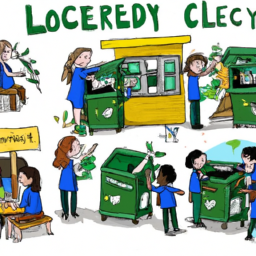
It’s crucial for schools to prioritize eco-friendly practices. One key aspect of this is community involvement in promoting sustainable habits. When students, teachers, parents, and local residents work together towards a common goal of environmental preservation, the impact can be significant. By involving the community in eco-friendly practices, schools not only raise awareness but also create a sense of collective responsibility.
In addition to community involvement, incorporating outdoor learning into eco-friendly education offers numerous benefits. Outdoor classrooms provide a unique setting for students to connect with nature and learn about their environment firsthand. Research has shown that spending time outside improves cognitive function, creativity, and overall well-being. Furthermore, outdoor learning encourages students to appreciate and respect nature, fostering a lifelong commitment to environmental stewardship.
Energy Conservation Strategies for Schools
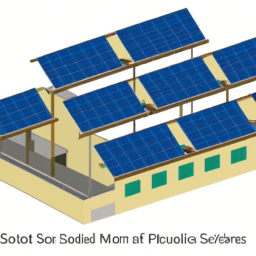
Implementing energy conservation strategies in schools can significantly reduce electricity consumption and promote sustainability. One effective strategy is to replace traditional lighting fixtures with energy-efficient alternatives such as LED lights. Energy efficient lighting not only uses less electricity but also lasts longer, reducing maintenance costs. By switching to LED lights, schools can save up to 75% of their lighting energy consumption.
Another important aspect of energy conservation in schools is reducing water consumption. Installing low-flow faucets and toilets can help conserve water without compromising functionality. These fixtures use less water per use, resulting in significant savings over time. Additionally, educating students and staff about the importance of turning off faucets when not in use and fixing leaks promptly can contribute to reducing water waste.
To further promote sustainability, schools can implement motion sensor technology in classrooms and common areas. Motion sensors automatically turn off lights when no one is present, avoiding unnecessary electricity usage. This simple yet effective solution not only reduces energy consumption but also creates a culture of environmental awareness among students.
Waste Reduction and Recycling Programs in Schools
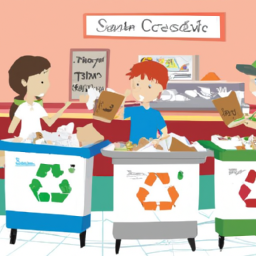
Installing recycling bins throughout the school campus encourages you to recycle and reduces waste sent to landfills. By placing these bins in convenient locations, such as classrooms, hallways, and cafeterias, it becomes easier for students like you to participate in sustainable practices. Recycling can help conserve valuable resources and reduce pollution caused by the extraction and processing of raw materials.
In addition to recycling, implementing a school-wide composting program is another effective way to reduce waste. Composting allows organic materials like food scraps, yard trimmings, and paper products to decompose naturally, creating nutrient-rich soil that can be used in gardens or landscaping projects. This not only diverts waste from landfills but also promotes sustainability within your school community.
Another important aspect of waste reduction is minimizing the use of single-use plastics. Encouraging the use of reusable water bottles, lunch containers, and utensils can greatly reduce the amount of plastic waste generated daily at school. Additionally, schools can explore alternative packaging options for cafeteria items or work with vendors who prioritize eco-friendly packaging solutions.
Promoting Sustainable Transportation in School Communities
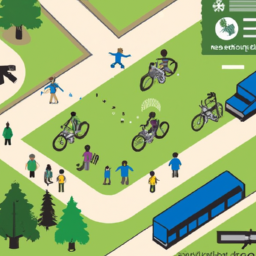
Choosing sustainable transportation options like walking, biking, or carpooling to school allows you to reduce your carbon footprint and contribute to a healthier environment. In today’s world, where climate change is a pressing issue, it is crucial for schools to promote sustainable commuting options in their communities. One effective way to do this is by promoting bike sharing programs in schools.
Bike sharing programs provide students with an affordable and convenient alternative to driving or taking the bus. By encouraging students to use bikes as a means of transportation, schools can help reduce traffic congestion and air pollution. Additionally, biking is not only beneficial for the environment but also for personal health and well-being. It provides an opportunity for exercise and helps improve cardiovascular fitness.
To successfully promote bike sharing programs in schools, it is important for institutions to invest in infrastructure such as bike racks and repair stations. Schools can also organize events like bike safety workshops or group rides to raise awareness about the benefits of cycling.
Green Building Initiatives for Eco-Friendly Schools
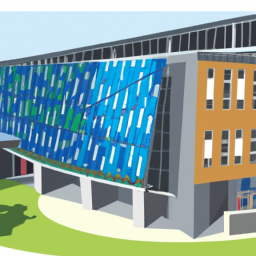
When it comes to creating sustainable school buildings, you can start by incorporating energy-efficient features like solar panels and natural lighting. Green building design is an essential aspect of making schools more eco-friendly. By using sustainable materials in the construction process, you can reduce the environmental impact and promote a healthier learning environment.
One key element of green building design is the use of sustainable materials such as recycled steel, bamboo, or reclaimed wood. These materials are not only environmentally friendly but also durable and cost-effective in the long run. They help minimize waste and reduce the need for resource-intensive manufacturing processes.
Additionally, incorporating energy-efficient features like solar panels can significantly reduce a school’s carbon footprint. Solar power provides clean and renewable energy that can be used to power lights, heating systems, and other electrical appliances within the school premises.
Furthermore, natural lighting plays a crucial role in creating sustainable school buildings. Large windows and skylights allow for maximum daylight penetration, reducing the need for artificial lighting during daytime hours. This not only saves energy but also improves students’ well-being by providing them with better access to natural light.
Integrating Renewable Energy Sources in School Facilities
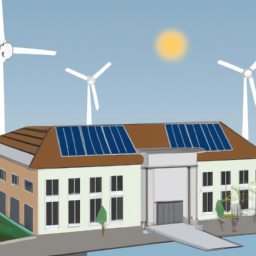
Integrating renewable energy sources in school facilities can significantly reduce their carbon footprint and promote a more sustainable future. With the increasing concerns about climate change and the rising costs of conventional energy sources, schools are looking for ways to become more eco-friendly and cost-effective. Renewable energy integration offers a promising solution.
One of the key benefits of integrating renewable energy in schools is its cost-effectiveness. Although initial installation costs may be higher compared to traditional energy systems, the long-term savings outweigh this investment. Solar panels, for example, can generate electricity for decades with minimal maintenance costs. Moreover, advancements in technology have made renewable energy systems more efficient and affordable over time.
In addition to saving money, integrating renewable energy sources also reduces greenhouse gas emissions. Solar panels and wind turbines produce clean electricity without emitting harmful pollutants or greenhouse gases into the atmosphere. By reducing reliance on fossil fuels, schools contribute to mitigating climate change and creating a healthier environment for students and staff.
Furthermore, incorporating renewable energy into school facilities serves as an educational tool that promotes sustainability awareness among students. Schools can use these installations as teaching resources to educate students about the importance of renewable energy and inspire them to make environmentally conscious choices.
Overall, integrating renewable energy sources in school facilities not only reduces carbon emissions but also provides long-term cost savings while educating future generations about sustainable practices. It is a practical approach towards creating a greener future for our schools and communities alike.
Implementing Water Conservation Measures in Schools
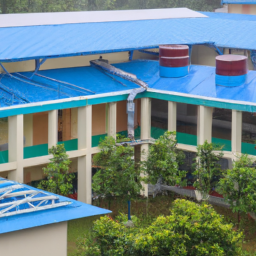
To implement water conservation measures in your school, start by installing low-flow faucets and toilets to reduce water usage. These fixtures are designed to use less water without compromising performance. According to the Environmental Protection Agency (EPA), a low-flow faucet can save up to 1.5 gallons of water per minute, while a low-flow toilet can save up to 2 gallons per flush compared to traditional models.
Another effective way to conserve water in schools is through rainwater harvesting. By collecting rainwater from rooftops and storing it for later use, you can significantly reduce the demand for municipal water supply. This harvested rainwater can be used for irrigation purposes, flushing toilets, or even cooling systems.
In addition to these measures, it is important to raise awareness among students and staff about the importance of conserving water. Implement educational programs that highlight the value of this precious resource and provide practical tips on how they can contribute towards its conservation.
Encouraging Sustainable Food Practices in School Cafeterias
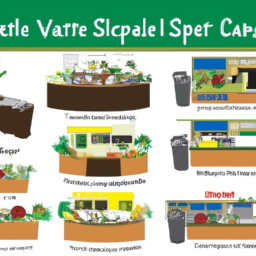
You can encourage sustainable food practices in your school cafeteria by offering a variety of plant-based options and sourcing ingredients locally whenever possible. Sustainable farming is an agricultural approach that aims to produce food while minimizing harm to the environment, protecting natural resources, and promoting the well-being of animals. By incorporating more plant-based options into your menu, such as vegetarian or vegan meals, you can reduce the environmental impact of your cafeteria. Plant-based diets require fewer resources like land, water, and energy compared to meat-based diets. Additionally, sourcing ingredients locally supports local farmers and reduces carbon emissions associated with long-distance transportation.
When it comes to implementing sustainable food practices in your school cafeteria, consider partnering with local farmers or joining community-supported agriculture (CSA) programs. These initiatives allow you to source fresh produce directly from nearby farms. Not only does this support the local economy, but it also ensures that you are serving fresh and seasonal ingredients to students. Furthermore, by purchasing locally grown foods, you are reducing the carbon footprint associated with transporting goods over long distances.
Creating Eco-Education Programs for Students

When it comes to educating students about the environment, one effective approach is to create eco-education programs that engage them in hands-on activities and encourage a deeper understanding of sustainability. Student engagement is crucial in fostering a sense of responsibility towards the environment. By involving students in practical activities like recycling drives, community clean-ups, and gardening projects, they can witness firsthand the impact of their actions on the environment.
Community partnerships play a significant role in creating successful eco-education programs. Collaborating with local organizations and businesses allows schools to access resources and expertise that enhance the learning experience for students. For example, partnering with environmental agencies can provide valuable insights into conservation efforts and expose students to real-world environmental challenges.
Incorporating field trips or guest speakers from these organizations can further enrich the educational experience. Students get an opportunity to hear from experts who are actively working towards sustainability goals.
Frequently Asked Questions
How Can Schools Involve Parents and the Local Community in Their Eco-Friendly Initiatives?
To involve parents and the local community in eco-friendly initiatives, schools can take several steps. Start by organizing informational sessions to educate parents about the importance of sustainability and how they can contribute. Encourage parent involvement in recycling programs by providing resources and incentives. Collaborate with local businesses and organizations to create partnerships that support eco-friendly practices. By fostering a sense of community engagement, schools can create a collective effort towards a greener future for everyone involved.
What Are Some Creative Ways for Schools to Reduce Energy Consumption and Promote Energy Conservation?
To reduce energy consumption and promote energy conservation in schools, you can implement some creative approaches and energy-saving techniques. Start by encouraging students to turn off lights and electronics when not in use, and utilize natural lighting whenever possible. Install motion sensor lights in classrooms and hallways to ensure that lights are only on when needed. Additionally, consider using programmable thermostats and insulation to regulate heating and cooling. These strategies can help schools become more eco-friendly while saving on energy costs.
Are There Any Government Grants or Funding Available to Support Schools in Implementing Green Building Initiatives?
Government grants and funding can be a great resource for schools looking to implement green building initiatives. These grants are specifically designed to support projects that promote sustainability and energy efficiency in educational institutions. They provide financial assistance to cover the costs of implementing eco-friendly measures, such as installing solar panels or upgrading insulation. By taking advantage of these grants, schools can make significant progress towards becoming more environmentally friendly while also saving money on energy bills.
How Can Schools Ensure That Their Waste Reduction and Recycling Programs Are Effective and Sustainable?
To ensure effective waste management and sustainable recycling programs in schools, start by implementing clear guidelines on waste segregation. Encourage students and staff to separate recyclables from general waste. Provide easily accessible recycling bins throughout the school premises. Partner with local recycling facilities to collect and process recyclable materials. Educate the school community about the importance of reducing waste and recycling through workshops or campaigns. Regularly monitor and evaluate the effectiveness of these programs to make necessary improvements.
What Are Some Examples of Successful Partnerships Between Schools and Local Businesses to Promote Sustainable Transportation Options for Students?
School community partnerships that engage local businesses can lead to successful initiatives promoting sustainable transportation options for students. By collaborating with businesses, schools can establish programs such as bike-sharing or carpooling services, providing environmentally-friendly alternatives to traditional modes of transportation. These partnerships not only encourage eco-friendly practices but also foster a sense of community involvement and responsibility towards the environment. Establishing these connections between schools and local businesses is a practical and effective way to make schools more eco-friendly.
Conclusion
In conclusion, by implementing eco-friendly practices in schools, we can create a more sustainable and healthier environment for students and staff. Energy conservation strategies, waste reduction programs, promoting sustainable transportation, green building initiatives, integrating renewable energy sources, implementing water conservation measures, encouraging sustainable food practices, and creating eco-education programs are all practical steps that can be taken to make schools more eco-friendly. These initiatives not only benefit the environment but also provide educational opportunities for students to learn about sustainability and become responsible global citizens. Let’s work together to create a greener future for our schools!